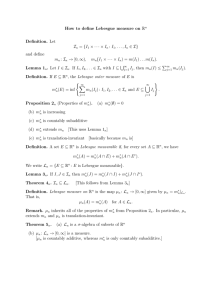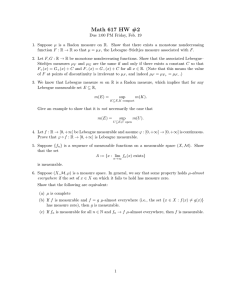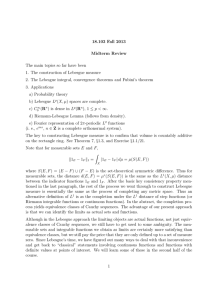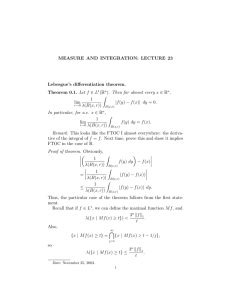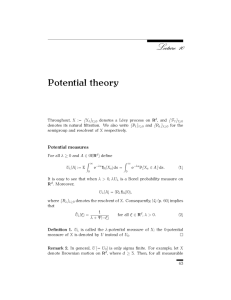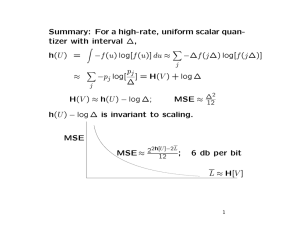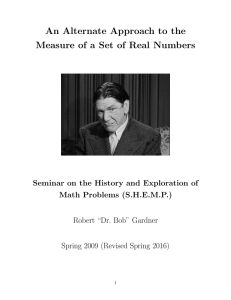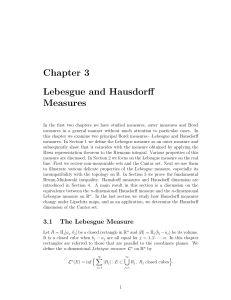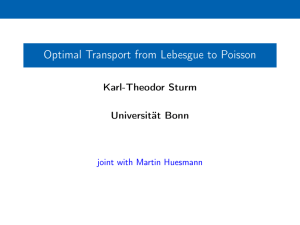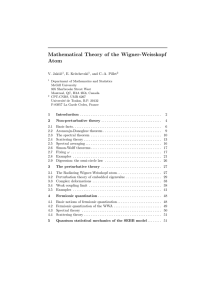Mathematics 2224: Lebesgue integral Tutorial exercise sheet 3
advertisement
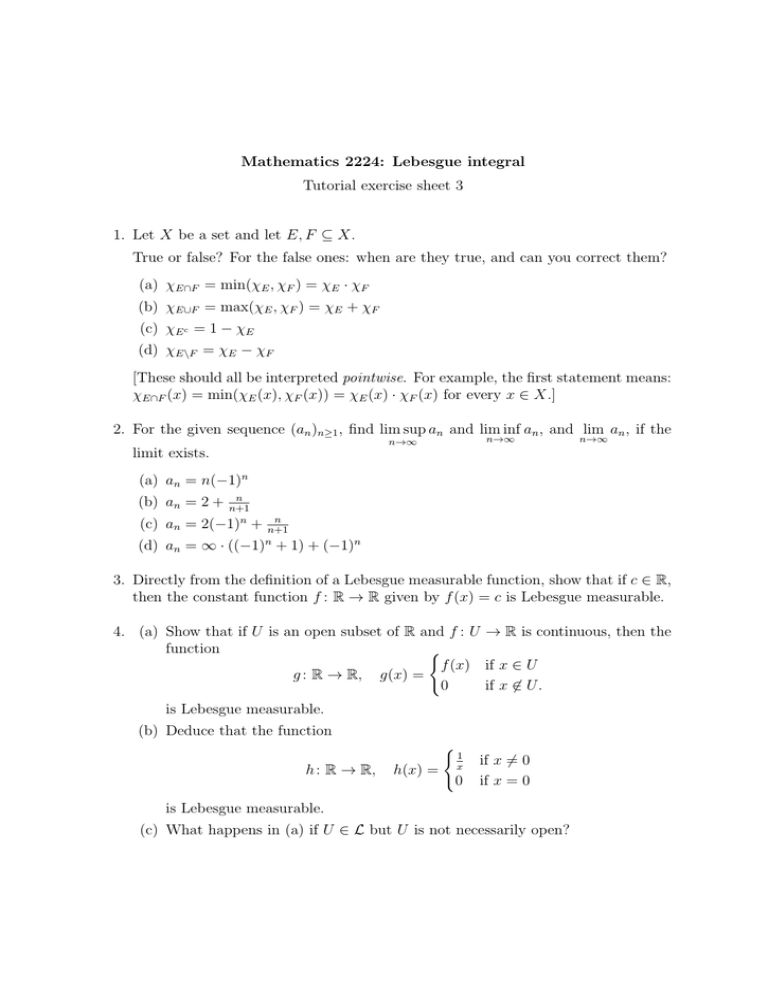
Mathematics 2224: Lebesgue integral Tutorial exercise sheet 3 1. Let X be a set and let E, F ⊆ X. True or false? For the false ones: when are they true, and can you correct them? (a) χE∩F = min(χE , χF ) = χE · χF (b) χE∪F = max(χE , χF ) = χE + χF (c) χE c = 1 − χE (d) χE\F = χE − χF [These should all be interpreted pointwise. For example, the first statement means: χE∩F (x) = min(χE (x), χF (x)) = χE (x) · χF (x) for every x ∈ X.] 2. For the given sequence (an )n≥1 , find lim sup an and lim inf an , and lim an , if the n→∞ n→∞ n→∞ limit exists. (a) an = n(−1)n (b) an = 2 + n n+1 n (c) an = 2(−1) + n n+1 n (d) an = ∞ · ((−1) + 1) + (−1)n 3. Directly from the definition of a Lebesgue measurable function, show that if c ∈ R, then the constant function f : R → R given by f (x) = c is Lebesgue measurable. 4. (a) Show that if U is an open subset of R and f : U → R is continuous, then the function ( f (x) if x ∈ U g : R → R, g(x) = 0 if x 6∈ U . is Lebesgue measurable. (b) Deduce that the function ( h : R → R, h(x) = 1 x 0 if x 6= 0 if x = 0 is Lebesgue measurable. (c) What happens in (a) if U ∈ L but U is not necessarily open?
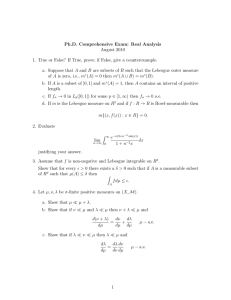
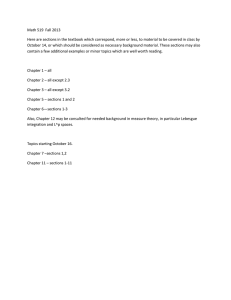
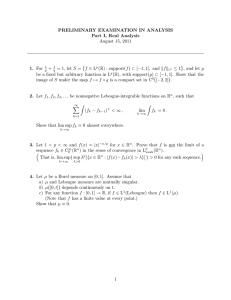
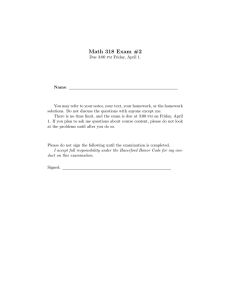
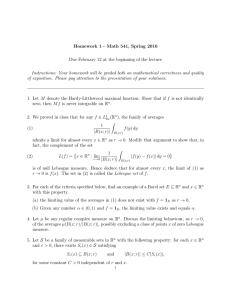

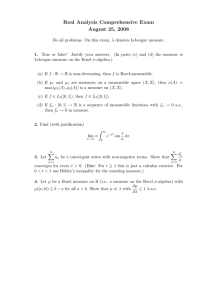
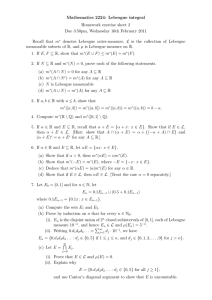


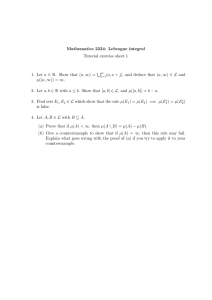
![18.125 Homework 10 : [0, 1] → [0, 1]](http://s2.studylib.net/store/data/010491524_1-2ff13645829ce7088147b1ea2705ee77-300x300.png)
